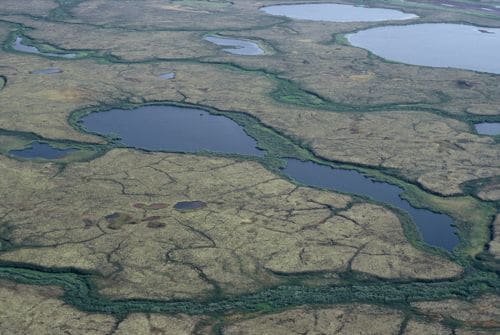Melting ice caps. Crippling droughts. Acidifying oceans. Even to the untrained eye, the trends are becoming starkly clear: Climate change is upon us, and it’s only getting worse.
That, in essence, was the grim takeaway from a speech given by Christopher Field, the founding director of the Carnegie Institution’s Department of Global Ecology at Stanford University and a co-author of the 2007 U.N. Intergovernmental Panel on Climate Change report, at the annual meeting of the American Association for the Advancement of Science (AAAS) last week.
Acknowledging that the estimates he and his colleagues developed for the 2007 report now looked woefully out of date, Dr. Field warned that, “We are now basically looking at a future climate that’s beyond anything we’ve considered seriously in climate model simulations.” The reason is, quite simply, that much more carbon dioxide is entering the atmosphere than the 2007 report’s estimates predicted – triggering a number of impacts to the global environment that caught many scientists by surprise.
To make matters worse, the planet is now largely in thrall to “positive feedback loops,” mechanisms that act to amplify the effects of climate change by accelerating natural processes such as permafrost melting. According to Dr. Field, over 100 billion tons of carbon and methane stored in the arctic permafrost could be released by the end of the century; rising temperatures would only hasten this trend.
At the same time that the terrestrial biosphere is releasing ever-growing quantities of carbon dioxide into the atmosphere, the oceans are slowly beginning to lose their ability to absorb them. Surface layers are becoming saturated with the gas, increasing the seawater’s acidity and making life treacherous for many organisms, particularly phytoplankton and corals.
Because ocean circulation is such a slow process, it can take over a 1,000 years for the saturated surface waters to be replaced by less saturated deeper waters. A study published last month in the journal Proceedings of the National Academy of Sciences concluded that even if nations successfully managed to restore emissions back to pre-industrial levels, it would take another 1,000 years or more to bring climate change under control and fully reverse all of its impacts.
Plants, which, through the miracle of photosynthesis, we’ve assumed would always be able to keep pace with rising emission levels, may also be on the verge of reaching a dangerous tipping point. A study published last year in Nature found that a warming world would mean that many forests in the northern latitudes could lose part of their ability to absorb carbon dioxide.
Losing the significant “discount” afforded by major carbon sinks like forests and the oceans could, according to lead author John Miller of the University of Colorado, result in our feeling the “full climatic brunt of our unrelenting emission of CO2 from fossil fuels.”
Though disturbing, these results shouldn’t come as much of a surprise to close observers. Whether you’ve been reading Mitchell’s latest dispatches about the disastrous Australian wildfires and Nemo-killing acidified waters or Joe Romm’s always on the money commentaries, you’re probably well aware that the situation is becoming increasingly dire.
While it is important to recognize the role of natural variability in influencing these recent patterns and to not misconstrue the evidence by directly attributing a specific event to climate change, it is equally important that we recognize that, unless we act soon, we may lose our fleeting opportunity to prevent the worst – mass tropical deforestation (which Dr. Field warns could happen as wildfires worsen) and unchecked arctic melting, to name a few – from happening.
Though the odds of negotiating a successor to the Kyoto Protocol at the Copenhagen talks this year look slim (couple political inaction with the financial crisis and you’ve got a losing scenario), China and the U.S., under the leadership of a more “enlightened” administration, finally seem ready to make progress on the issue – which could yield significant dividends down the road.
The next IPCC report, which will provide a much-needed update to our understanding of regional climatic impacts, is slated to appear in 2014.
This month we’re giving away FREE copies Nobel Laureate Dr. Andrew Weaver’s new book Keeping Our Cool: Canada in a Warming World.
Go here to find out more details about DeSmogBlog’s monthly book give-away.
Subscribe to our newsletter
Stay up to date with DeSmog news and alerts







